The year in research – stories worth revisiting
Posted by Velvet Hasner
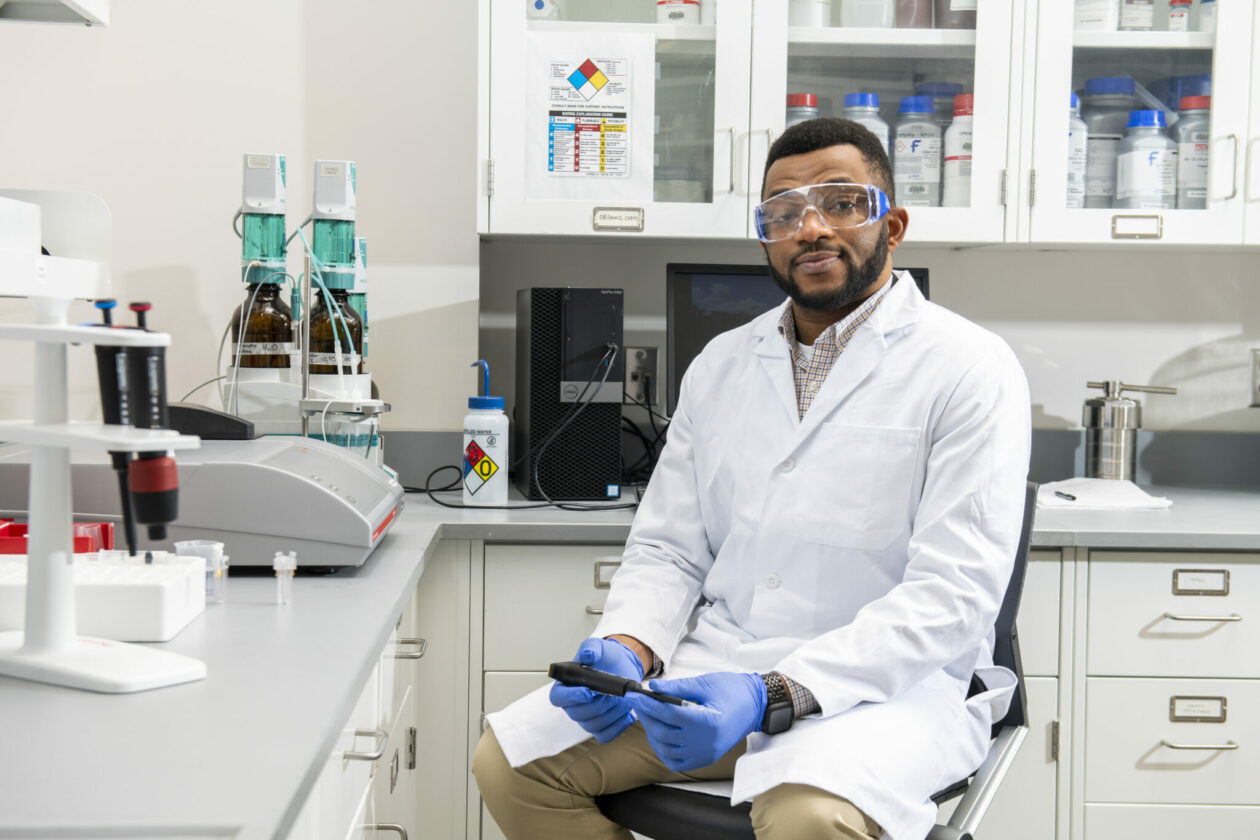
Dr. Monday Uchenna Okoronkwo received the National Science Foundation’s Faculty Early Career Development Program award. Photo by Michael Pierce/Missouri S&T.
From improving glaucoma treatment to mining the minerals needed for our daily lives, Missouri S&T researchers are coming up with innovative ways to tackle challenges.
Here’s a look back at 10 research topics of 2023 that demonstrate the variety and depth of research at S&T.
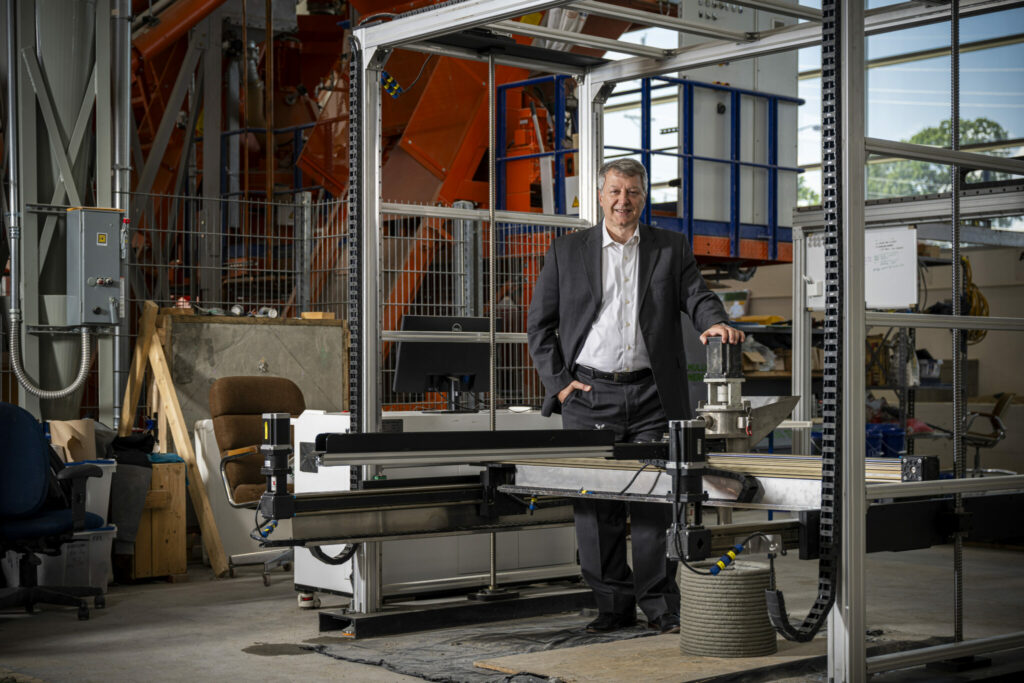
Concrete solutions
S&T researchers are investigating ways to improve cement.
Dr. Monday Uchenna Okoronkwo, assistant professor of chemical and biochemical engineering at S&T, is researching how to mimic the chemistry and composition of ancient Roman concrete while applying modern technology to make it even better. His research is funded by a National Science Foundation CAREER grant.
Dr. Kamal Khayat is leading a $1.4 million project funded by the U.S. Army Corps of Engineers to develop an artificial intelligence program that will determine the best locally-available materials for 3D-printed concrete. This research could improve construction processes, keep troops safer, put a spotlight on sustainability and benefit future humanitarian missions. Khayat is vice chancellor for research and innovation and Vernon and Maralee Jones Professor of Civil Engineering at S&T.
Dr. Hongyan Ma leads a research team that received $2.5 million to find new ways to turn waste products into supplementary cementitious materials – plus use those materials to store carbon permanently in concrete. Ma is a Francisco Benavides Scholar and associate professor of civil engineering at S&T
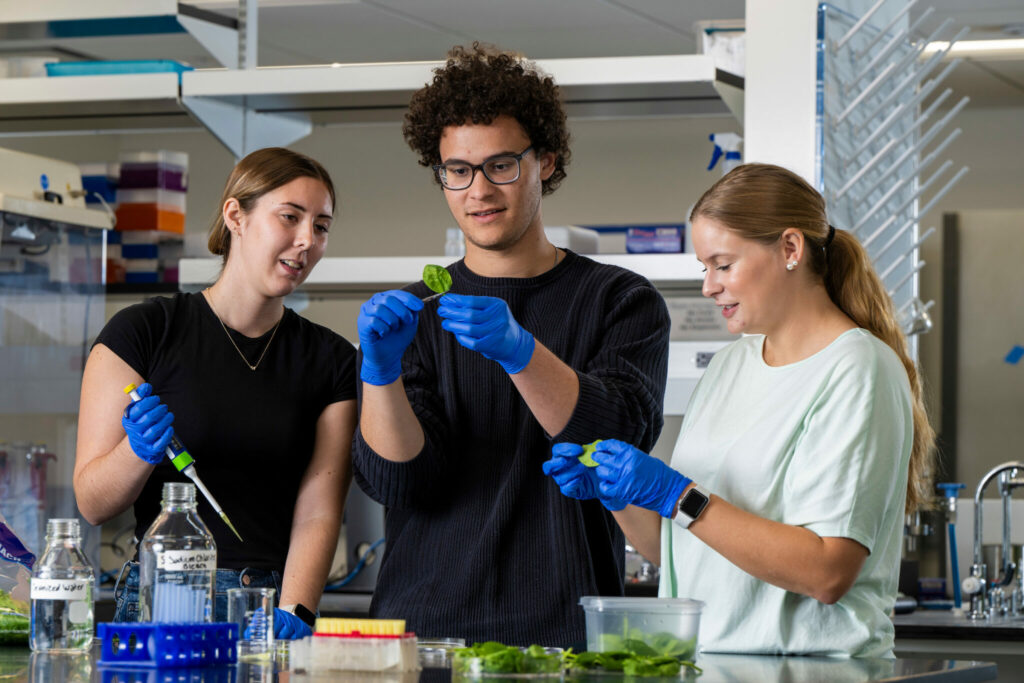
Students + spinach = success
A team of three Missouri S&T undergraduate students recently won a $15,000 first place award at the Regnier Venture Creation Challenge in Kansas City for their project titled “Foliagraft.” Foliagraft is a new way to use spinach leaves and stem cells to help burn patients and others with wounds and conditions that require a skin graft.
The three were among several S&T undergraduate students who conducted research during the year, including over a dozen students who participated in the annual Undergraduate Research Day at the Capitol in April and 12 students on S&T’s team competing in NASA’s 2023 Breakthrough, Innovative, and Game-Changing Idea (BIG Idea) Challenge: Lunar Forge.
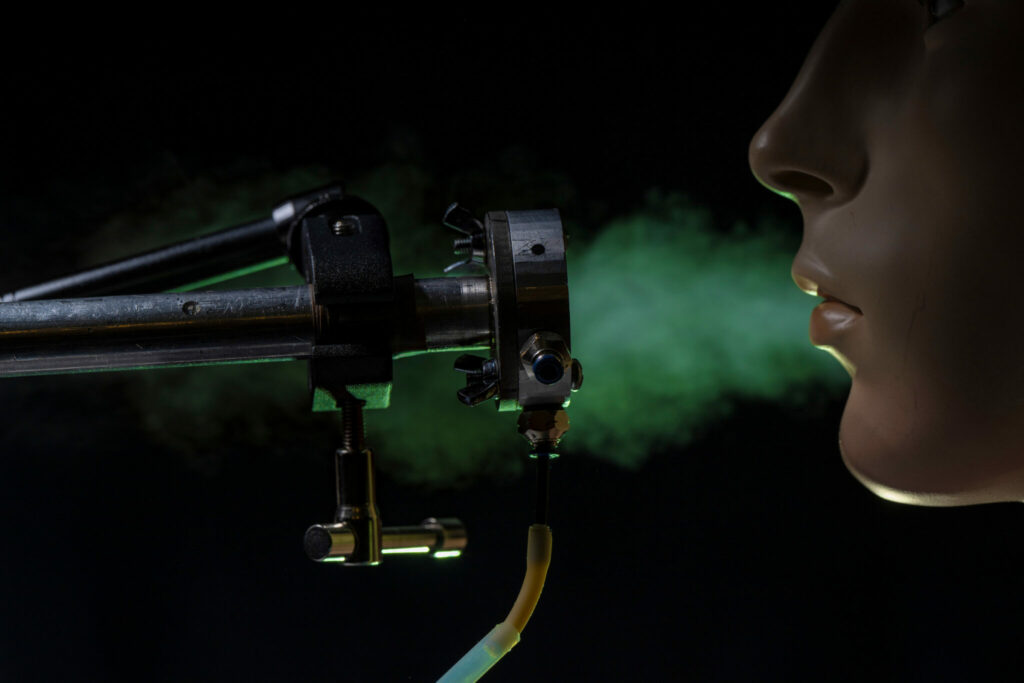
Solving for health
Work by Missouri S&T researchers could lead to improvements in human health or better treatments for patients.
Dr. Mark Towler, a Doshi Professor of Chemical and Biochemical Engineering, has spent several years researching how the glass powder he developed could stop bleeding more safely and effectively than traditional methods, such as packing the wounds with dressings. He first applied for a patent for the treatment in 2016, and it was granted last year. This technology is now licensed by a Kentucky company with military connections, and Towler is exploring additional ways it could be beneficial.
Dr. Jie Huang, the Roy A. Wilkens Endowed Associate Professor in Electrical Engineering, is developing technology that would allow patients to “just breathe” by taking a test by breathing into an apparatus to avoid more traditional diagnostic testing such as bloodwork.
Dr. Hu Yang, S&T’s Doshi Endowed Department Chair of Chemical and Biochemical Engineering, was awarded a patent for a nano-formulation that could potentially be used as a treatment for atherosclerosis, or hardening of the arteries. He was also awarded a National Institutes of Health R01 grant, which will provide his research team with $2.5 million in funding over the next five years for glaucoma treatment research.
The best of the best
A total of 58 current and former faculty of Missouri S&T are among the top researchers in their field as measured by their career research records, and 72 current or former Missouri S&T researchers were among the best in their fields in 2022, according to an analysis of standardized citation indicators of the Elsevier Data Repository published last October by Stanford University.
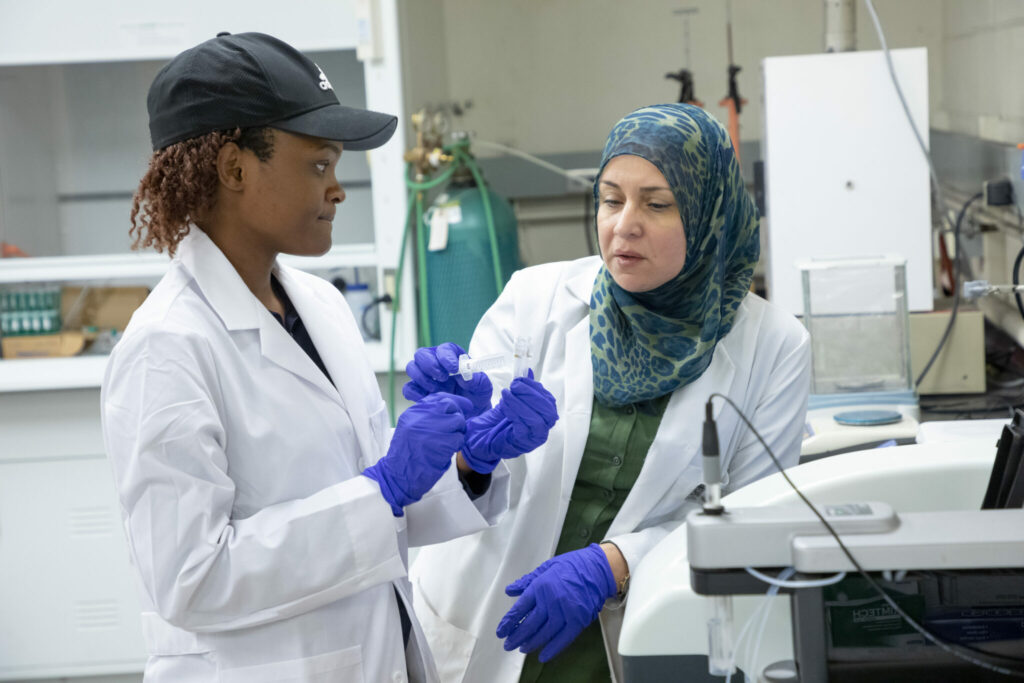
Critical minerals are critical!
The United States’ need for critical minerals for manufacturing has reached a crisis level, and researchers at Missouri S&T are leading the charge to develop solutions.
Missouri S&T’s expertise in critical minerals and materials research led to its selection as one of 31 Regional Innovation and Technology Hubs (Tech Hubs) funded through the CHIPS and Science Act. The S&T-led initiative, called the Critical Minerals and Materials for Advanced Energy (CM2AE) Tech Hub, is focused on creating economic development strategies for a mineral-rich 14-county region of Missouri. It is one of only two Tech Hubs focused on critical minerals and advanced energy, and will now be considered for additional federal funding, ranging from $40 million to $70 million.
Additional highlights on critical minerals and materials research and collaboration from this year include:
- Dr. Lana Alagha, an associate professor of mining engineering at Missouri S&T, received a $375,000 grant from the National Renewable Energy Laboratory to develop and enhance methods for recovering critical minerals that are often lost when processing copper.
- Dr. Hongyan Ma was tapped by the U.S. Department of Energy’s Advanced Research Projects Agency-Energy (ARPA-E) to lead a $2 million grant project related to critical minerals and clean energy. He is researching how critical elements trapped in silicate materials can be recovered with a carbon-negative process.
- Missouri S&T hosted the third annual Resilient Supply of Critical Minerals national workshop in August. Funded by the National Science Foundation, it brought in 128 attendees in person and another 90 online. In its first two years, the workshop was fully remote due to COVID-19 precautions.

Farming for the future
S&T researchers are using their expertise to improve agriculture through precision agriculture and by teaching farmers about drone technology.
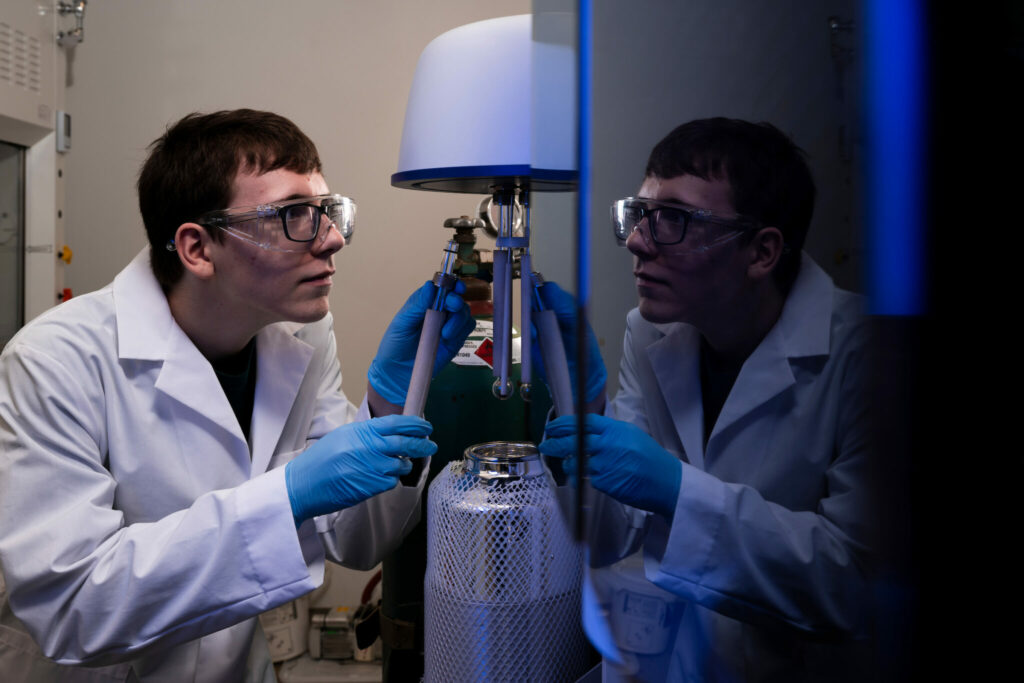
Environmentally friendly
Missouri S&T researchers are tackling the complex problem of climate change in myriad ways, from improving sustainable jet fuels to removing greenhouse gasses from the atmosphere.
Dr. Philip Whitefield, professor emeritus of chemistry, and Dr. Klaus Woelk, associate professor of chemistry,have received a $3 million grant from the U.S. Department of Transportation’s Federal Aviation Administration (FAA) to further study the effects of sustainable aviation fuels on the environment. S&T received a similar grant of over $2 million in 2022 to begin the research.
Missouri S&T researchers will receive up to $13.3 million over the next five years through a federal initiative to study methods to lower greenhouse gas emissions in iron and steel manufacturing.
Working with Dr. Chariklia Sotiriou-Leventis, chair and professor of chemistry at Missouri S&T, undergraduate student Samuel Hackett is studying carbon aerogels and their ability to absorb carbon dioxide from the atmosphere.
Dr. Shoaib Usman, associate professor of nuclear engineering and radiation science, received a $2 million grant from the U.S. Department of Energy to assist the agency in assessing public perception of nuclear waste sites.
Dr. Guang Xu, an associate professor of mining engineering, is leading research funded by the Environmental Protection Agency to prevent pollution in mining.
Add to your bookshelf
Check out the latest scholarly books by faculty.
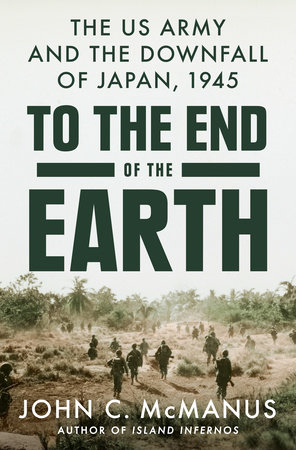
- Breakfast Cereal: A Global History, by Dr. Kathryn Cornell Dolan, examines the entirety of cereal, from the beginning of agricultural history in the Fertile Crescent to modern sugary snacks. Dolan is an associate professor of English and technical communication.
- In Bugsy’s Shadow: Moe Sedway, “Bugsy” Siegel, and the Birth of Organized Crime in Las Vegas, Dr. Larry Gragg chronicles how mobster Moe “Little Moey” Sedway became a part of a New York City organized crime gang led by Meyer Lansky and Benjamin “Bugsy” Siegel.
- Gragg also wrote Master Builder, a biography that covers the life and work of Fred S. Kummer, a philanthropist, entrepreneur and 1955 Missouri S&T graduate. Gragg is a Curators’ Distinguished Teaching Professor emeritus of history and university historian.
- Dr. Gerald “Jerry” Cohen, who is an expert in etymology, or the study of word origins, co-authored a book titled Origin of the Term Dude, along with Barry Popik and Peter Reitan.
- Military historian Dr. John C. McManus penned the final book in his World War II Pacific theater trilogy, To the End of the Earth: The U.S. Army and the Downfall of Japan, 1945. McManus is a Curators’ Distinguished Professor of history and political science.

Light findings
Dr. Alexey Yamilov, professor of physics, led a research collaboration that used a new computational process to observe a previously theorized emerging behavior of light. Despite over 40 years of research, it had remained unknown whether the phenomenon called Anderson localization could take place for the electromagnetic waves.
The research team’s findings, titled “Anderson localization of electromagnetic waves in three dimensions,” was published in Nature Physics on June 15, and proved its existence.
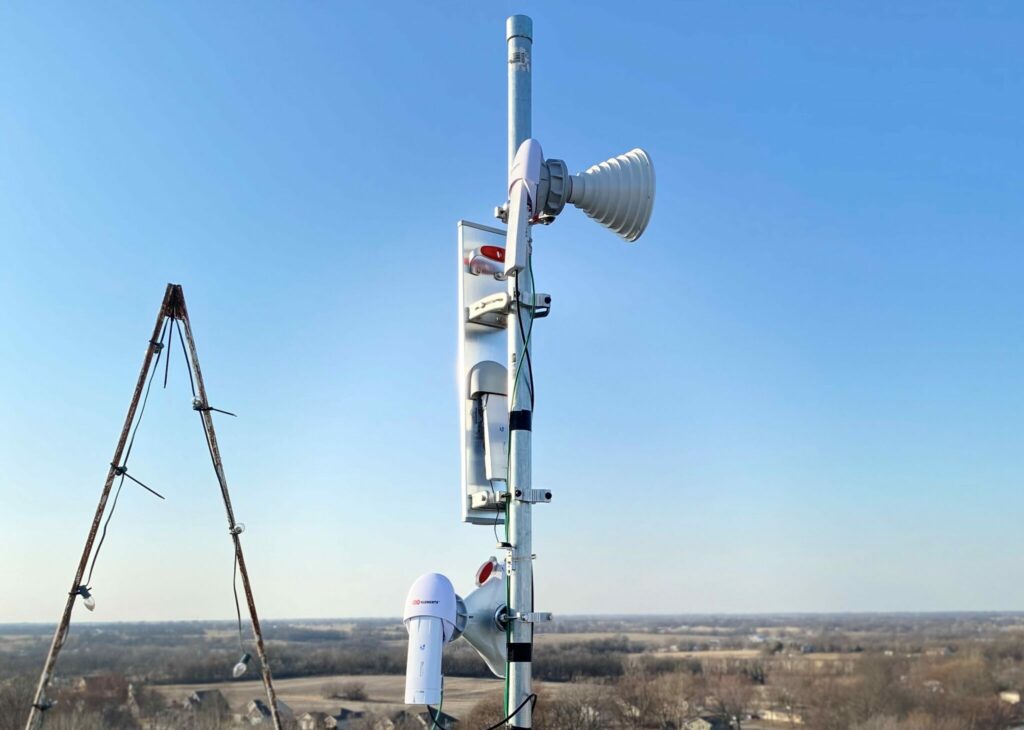
For the public
Missouri S&T joined the Public Interest Technology University Network (PIT-UN) in October. Public interest technology refers to a set of practices guiding the design, deployment and governance of technology in ways that advance the public interest.
Dr. Casey Canfield, assistant professor of engineering management and systems engineering, is leading an in-depth analysis of infrastructure in rural areas with grant funding from PIT-UN.
Leave a Reply